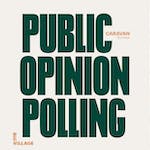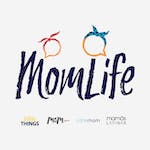Growing a B2B Tool Manufacturing Business through Brand Building
What We Did:
Our approach involved a multi-phased approach of secondary research investigation, qualitative exploration, and quantitative validation across the globe.
Phase 1
Secondary Research Investigation, surfaced market shifts, challenges, and trends impacting the growth of this sector. It also provided confirmation of market size and spend for our clients’ tools across two types of customer organizations, electronic manufacturing services and original equipment manufacturers. This insight, in concert with our client’s internal sales data, helped prioritize target markets in key global regions and clarify options to properly represent the two customer types.
Phase 2
Qualitative Exploration, verified and validated internal hypotheses related to:
- The buyers’ journey – those involved (Choosers and Users), their roles, their influence, what they value, their spend limits and levels
- Tool characteristics critical to the fulfillment of functional and emotional needs and their relationship to the Users’ ability to conduct their work and find success in their job
- Sources from which buyers learn about tool brands – online and offline, influences and influencers
- Providers of tools – direct from manufacturers, indirect through third-party distributors/suppliers, eCommerce, etc.
- Brand exposure, experience, and loyalty – those investigated, those purchased, those repurchased, and those they would never purchase again
Phase 3
Quantitative Validation, provided reliable results that revealed by company type and geography:
- Extended profiles of Users and Choosers across the buying journey
- The strength of our client’s brand funnel in its competitive set – awareness, consideration, purchase, and loyalty
- A prioritized list of purchase drivers that noted common versus unique drivers
- Market opportunity maps – recognizing the strength of our client’s brand performance on the prioritized list of purchase drivers relative to the competition
- Spend estimates and allocations by brand – current and future state, on and off contract purchases, planned and unplanned purchases, by providers of tools
The Results
As anticipated our client’s brand operates in a very cluttered competitive space where brand messaging was largely focused on the functional values of product quality; aspects that have reached parity thanks to product innovation. Local market messaging was undifferentiated and did not acknowledge the role of User in accomplishing their job.
Somewhat surprisingly, the exploration of the buyers’ journey revealed the power and decision-making role of the User, a role typically reserved for the Chooser. Critical understanding of the User, their profile, their preferences, their sources of brand awareness and understanding, and their everyday job challenges balancing the needs of their business while producing high-quality work, informed the functional as well as the emotional needs of the target audience.
This research led the client to reposition its brand around the needs and expectations of the target audience of Users. Messaging was tailored to the phases of the buying journey to help the audience complete their tasks and move on to the next step in their purchase process. The goal of the messaging was to acknowledge the role of the User – their challenges, their desire to produce high-quality work, and the importance of the tools they rely on to do their job well.
Contact Insights
"*" indicates required fields









